Vintage (1972-1988) Corning Spice-o-Life Casserole: 26,500 ppm Lead (90 ppm is unsafe) & 236 ppm Cd (75 is unsafe)
For those new to the Lead Safe Mama website:
Tamara Rubin is a multiple-federal-award-winning independent advocate for childhood Lead poisoning prevention and consumer goods safety, and a documentary filmmaker. She is also a mother of Lead-poisoned children (two of her four sons were acutely Lead-poisoned in 2005).
- Tamara owns and runs Lead Safe Mama, LLC — a unique community collaborative woman-owned small business for childhood Lead poisoning prevention and consumer goods safety.
- Since 2009, Tamara has been conducting XRF testing (a scientific testing method) using the exact instrumentation employed by the U.S. Consumer Product Safety Commission to test consumer goods for toxicants (specifically heavy metals — including Lead, Cadmium, Mercury, Antimony, and Arsenic).
- Since July of 2022, the work of Lead Safe Mama, LLC has been responsible for 5 product recalls (FDA and CPSC).
- All test results reported on this website are science-based, accurate, and replicable.
- Recent notable press… There has been too much to mention already in 2024! Please check out our press page to see some of the amazing coverage of our work so far this year!
Originally published: December 27, 2018
Updated: December 28, 2019
Welcome to the Website!
I am a mother of Lead-poisoned children. My children were poisoned in 2005 by the work of a painting contractor. You can see more of my story in the trailer for my documentary film HERE. Since then, I have become an award-winning environmental activist for Childhood Lead Poisoning Prevention. Read my brief bio HERE.
A main component of the environmental activism I do is independent consumer goods testing for toxicants including Lead, Cadmium, Arsenic, and Mercury. Here’s a link with more information about how that works.
I test things that people send to me, and I also do home visits with families where I test everything in their home that I (or they) have toxicity concerns about. This casserole dish is an example of one of the items readers asked me to test.
What do you use for testing? Can I do this at home?
A lot of what people send (or bring) me to test are their vintage cookware pieces — beloved dishes that many of you have in your homes and have inherited from your mothers and grandmothers. I use an XRF analyzer for this testing (it is not the kind of testing that you, as a normal consumer, can do at home). An XRF instrument suitable for this kind of testing usually costs something in the range of $35,000 to $50,000, equipped with the software modules and other technology required for reporting consumer goods test results in parts per million (ppm), down to single or double digit parts per million. I am trained and certified in using the instrument and I borrow or rent an instrument for the testing I do.
In many cases, I see certain items (or a member of an entire class of similar items)and have immediate concerns for actual poisoning of the user(s), unfortunately, based on a great deal of personal experience. For example, Franciscan Potteries dishware is often very toxic and potentially leaching; I recommend avoiding it entirely, especially for actual food use.
Why is having Lead (and/or Cadmium) on the OUTSIDE of a casserole dish a problem?
With pieces like the vintage Corningware casserole pictured here on this article (and much of the vintage Pyrex I have tested), where the toxicants found (like Lead and Cadmium) are primarily on the outside (not on the interior food surface of the item), my concern is more for the potential long term trace level exposure that might be caused by regular use of an item like this (due to the long-term wear of the exterior painted coating).
For context, please understand that it quite literally just takes a microscopic amount of Lead to poison a human being. Even a minute amount — of a neurotoxicant as potent as Lead — in household dust (or transferring to your hands, wearing off into your kitchen cabinets, dishwasher, sink or prep surfaces) is sufficient enough to poison a child. It literally cannot be detected without the aid of XRF testing or chemical reagent testing or other sensitive testing protocols (i.e. it cannot be seen with the naked eye).
In addition to concerns for potential exposure from normal use of these items, they are also usually stored in your cabinet, stacked up — with the outside of one dish stored on the inside of another, creating friction as they are moved/removed. This could transfer the worn-off trace residue on the inside of a casserole that has just been washed before storing in the cabinet (and therefore is not likely to be washed again with removal from the cabinet/before use).
Concern for this specific type of exposure (i.e. “the exposure levels over time from deteriorating coatings on vintage dishware”) has not yet been researched or studied. Although, a study about the concern for the same type of exposure from glassware did come out fairly recently and you can check that out here. But this overall lack of research is only because, from a practical standpoint, there is no one who stands to “benefit” from it (no one who has a financial interest in proving potential harm from using Leaded cookware on a regular basis).
The glassware study linked above is a great example of a study finally being done documenting and reporting a potential concern (which I have been writing about for more than 10 years now). This gives me hope that a scientific body may eventually — sometime soon perhaps — conduct a study and create a report about potential Lead exposure from cookware, like the cookware I have tested and shared here on my website.
Even in the absence of a study, because the safety of Leaded cookware has not been proven — and because Lead-free options are widely (and inexpensively) available in this day and age — I feel it is prudent never to have any Leaded cookware or utensils in our kitchens or food serving environments.
The Specific Test Results for the Casserole Pictured on This Article:
The painted decorative elements on the outside of this vintage Corningware Spice-o-Life casserole dish tested positive for Lead when tested with an XRF instrument.
Below is the set of XRF readings with the scope focused on the red tomato in the center*:
- Lead (Pb): 26,500 +/- 700 ppm
- Cadmium (Cd): 236 +/- 19 ppm
- Chromium (Cr): 518 +/- 113 ppm
- Antimony (Sb): 144 +/- 28 ppm
- Bromine (Br): 120 +/- 12 ppm
- Zinc (Zn): 5,842 +/- 223 ppm
- Copper (Cu): 99 +/- 44 ppm
- Iron (Fe): 2,710 +/- 262 ppm
- Vanadium (V): 141 +/- 47 ppm
- Titanium (Ti): 1,506 +/- 130 ppm
- Zirconium (Zr): 1,954 +/- 73 ppm
- Platinum (Pt): 422 +/- 134 ppm
*Note: all other vegetables in the design were tested and results were within a similar range to the results for the tomato shown above.
(Continue reading below the image.)
Below are the XRF test results for the inside food surface (plain white) of this same casserole dish (image above):
- Antimony (Sb): 77 +/- 18 ppm
- Bromine (Br): 178 +/- 10 ppm
- Zinc (Zn): 9,890 +/- 303 ppm
- Iron (Fe): 667 +/- 138 ppm
- Titanium (Ti): 19,700 +/- 800 ppm
Here’s a link to an article from the site that helps date many of the Corningware patterns.
Q. Why is 90 ppm “unsafe?”
For context: In 2018, the amount of Lead considered toxic in a modern/newly manufactured item intended for use by children is 90 ppm lead (or higher) in the coating or 100 ppm (or higher) in the substrate.
Dishware is not considered to be an “item intended for children” (even newly made casserole dishes that are manufactured in the United States) and, as such, is not regulated for total Lead content as tested/detectable with an XRF instrument.
–
Would you like to see more test results like this? Please consider making a small monthly gift in support of my advocacy, here!
–
Thank you for reading, following, and sharing!
As always, please ask questions if you have them and I will do my best to answer as soon as I have a moment.
Tamara Rubin
#LeadSafeMama
Here are some other similar pieces you may want to check out — click the image to read the article about the item pictured (and to see the level of Lead or Cadmium that I found).
Never Miss an Important Article Again!
Join our Email List


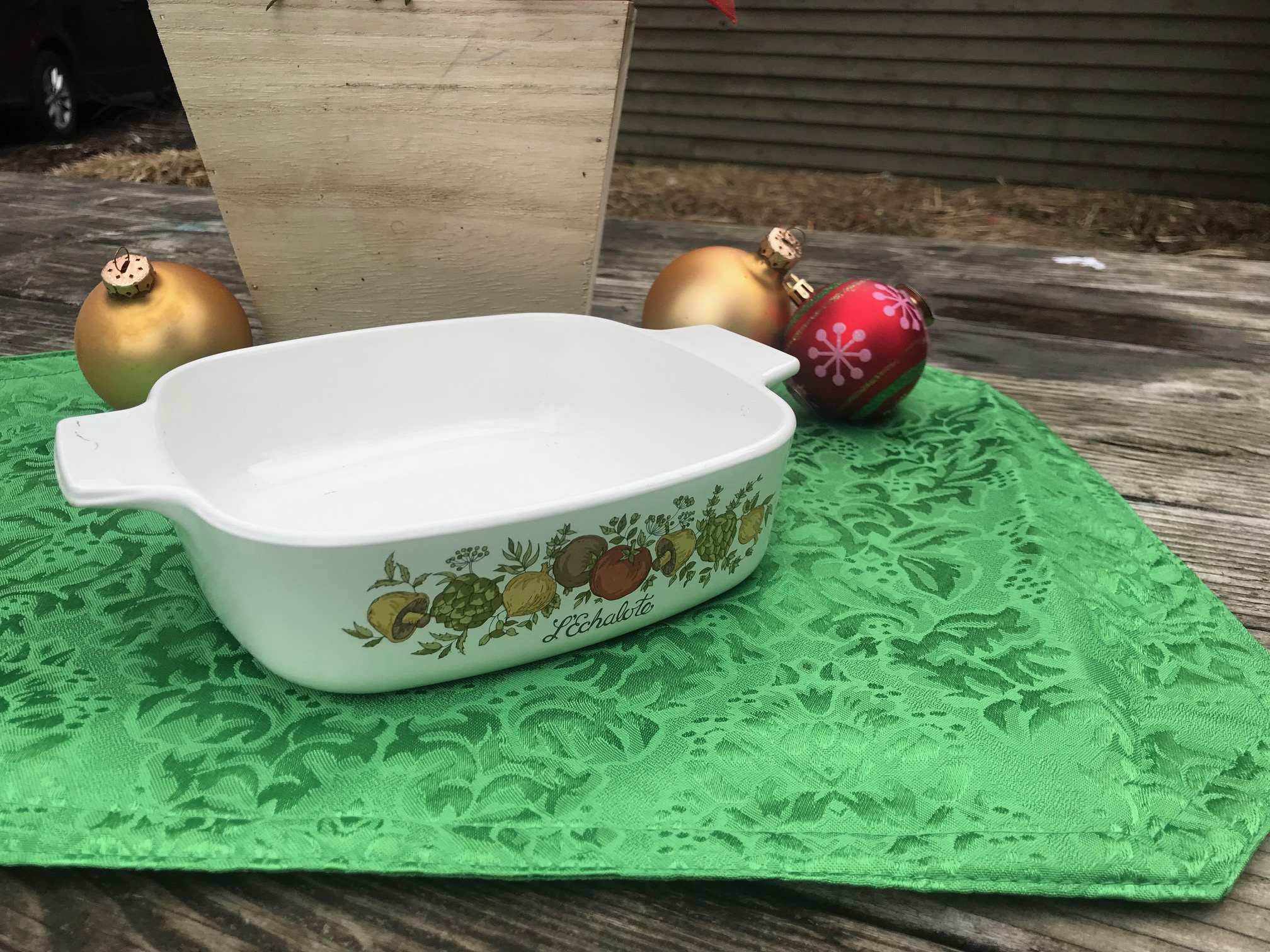






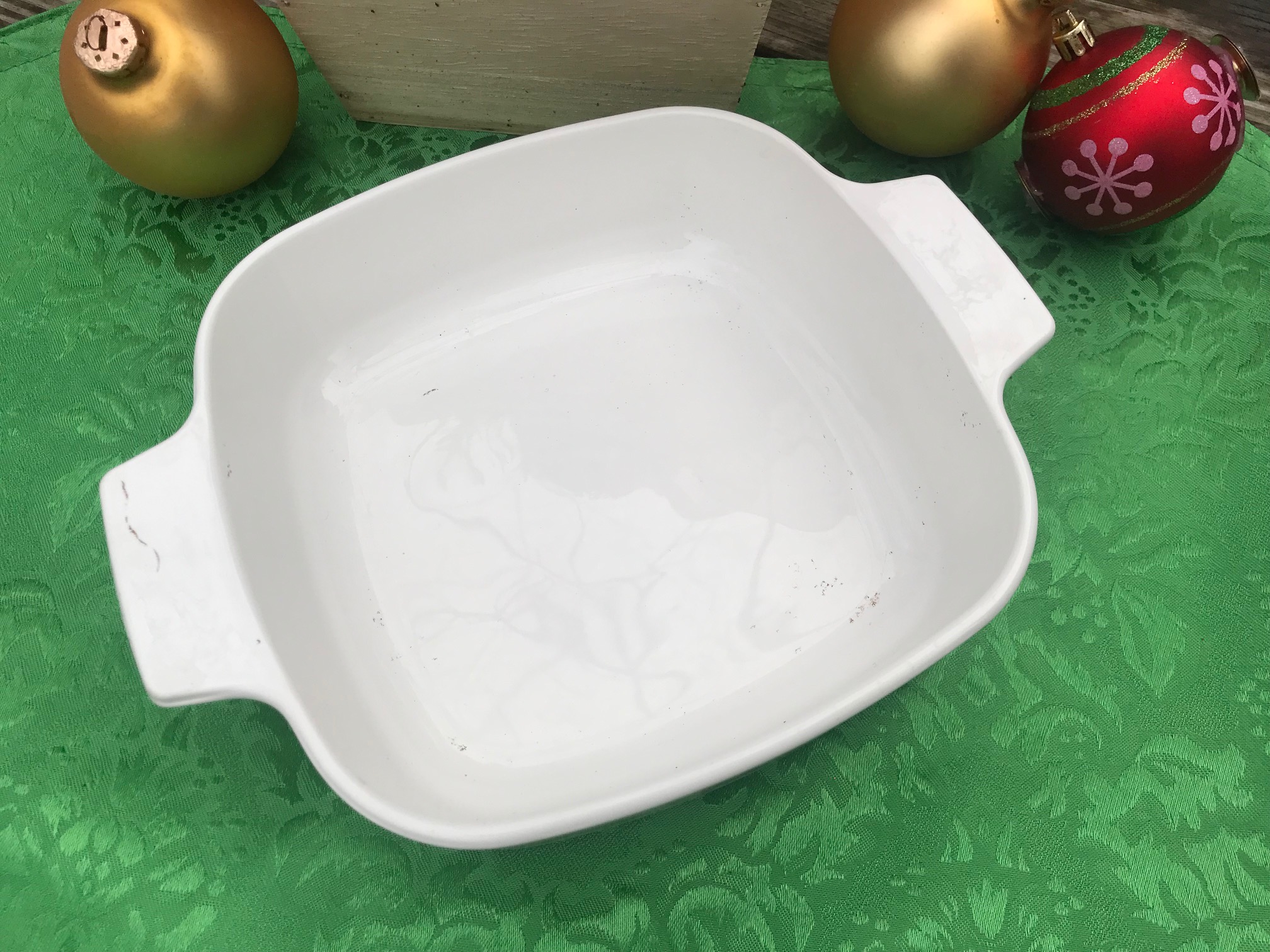
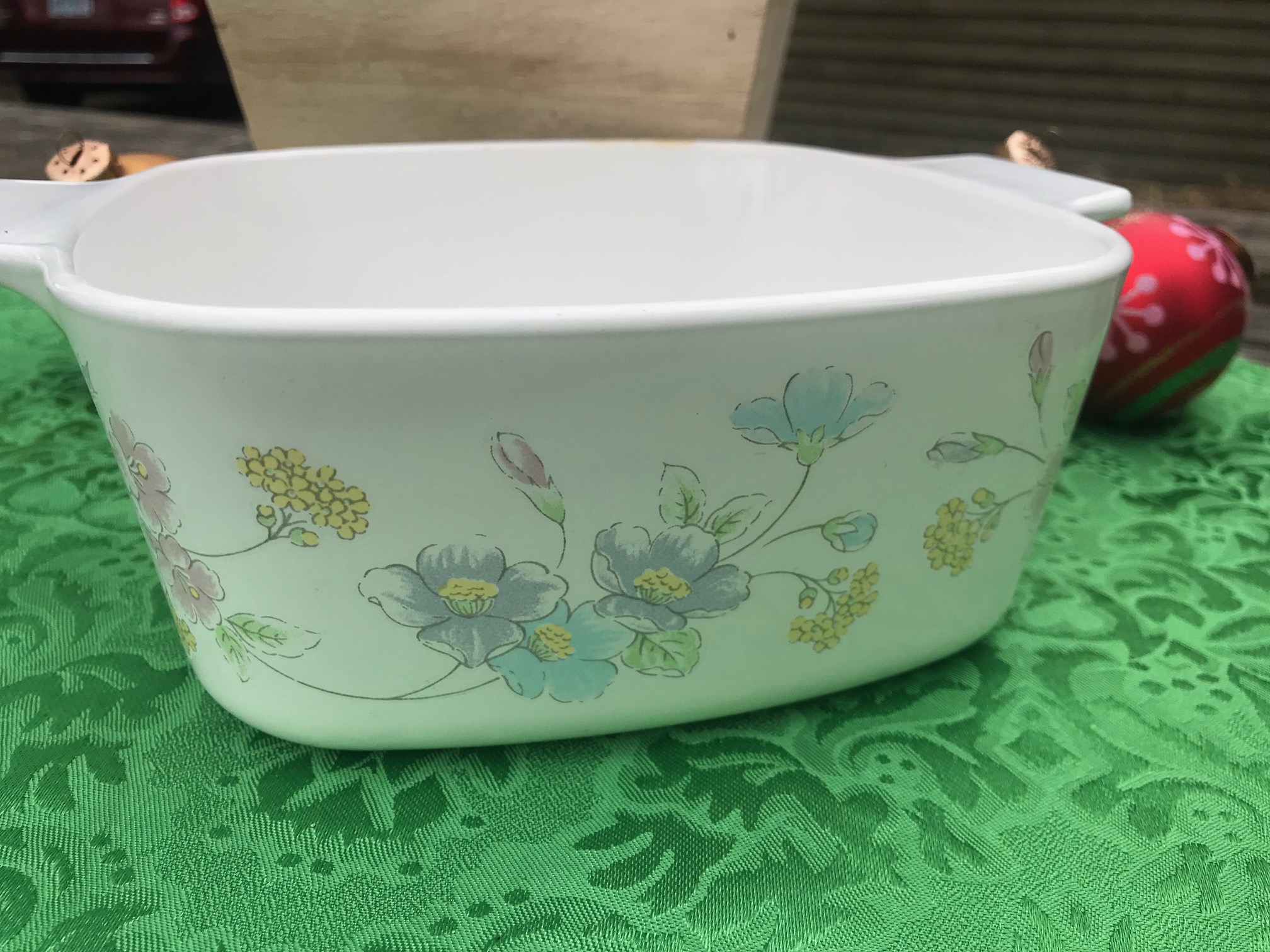
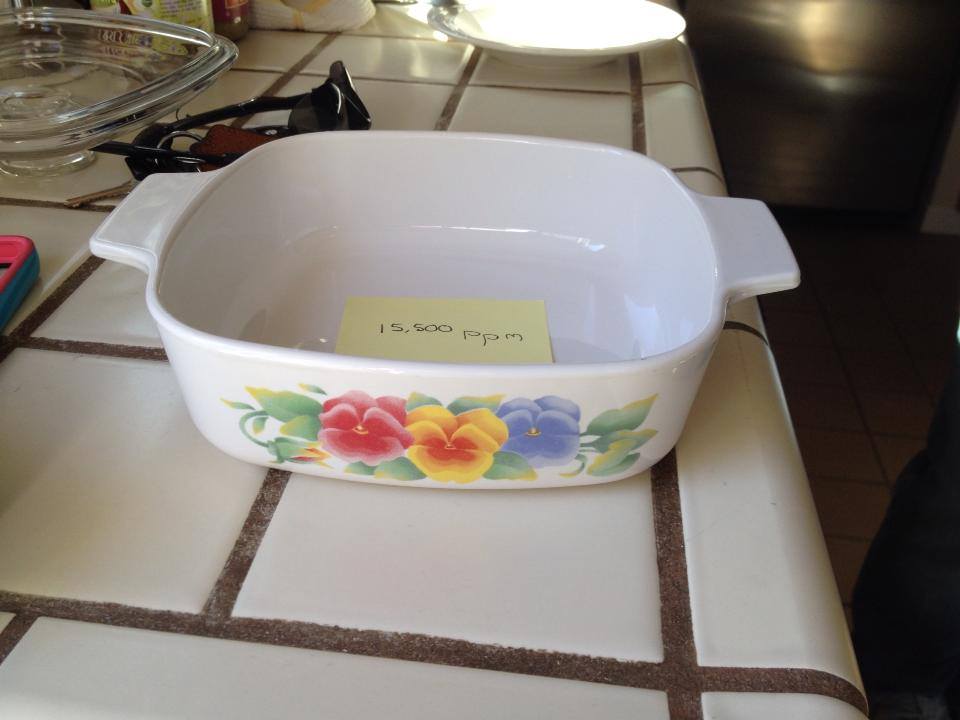
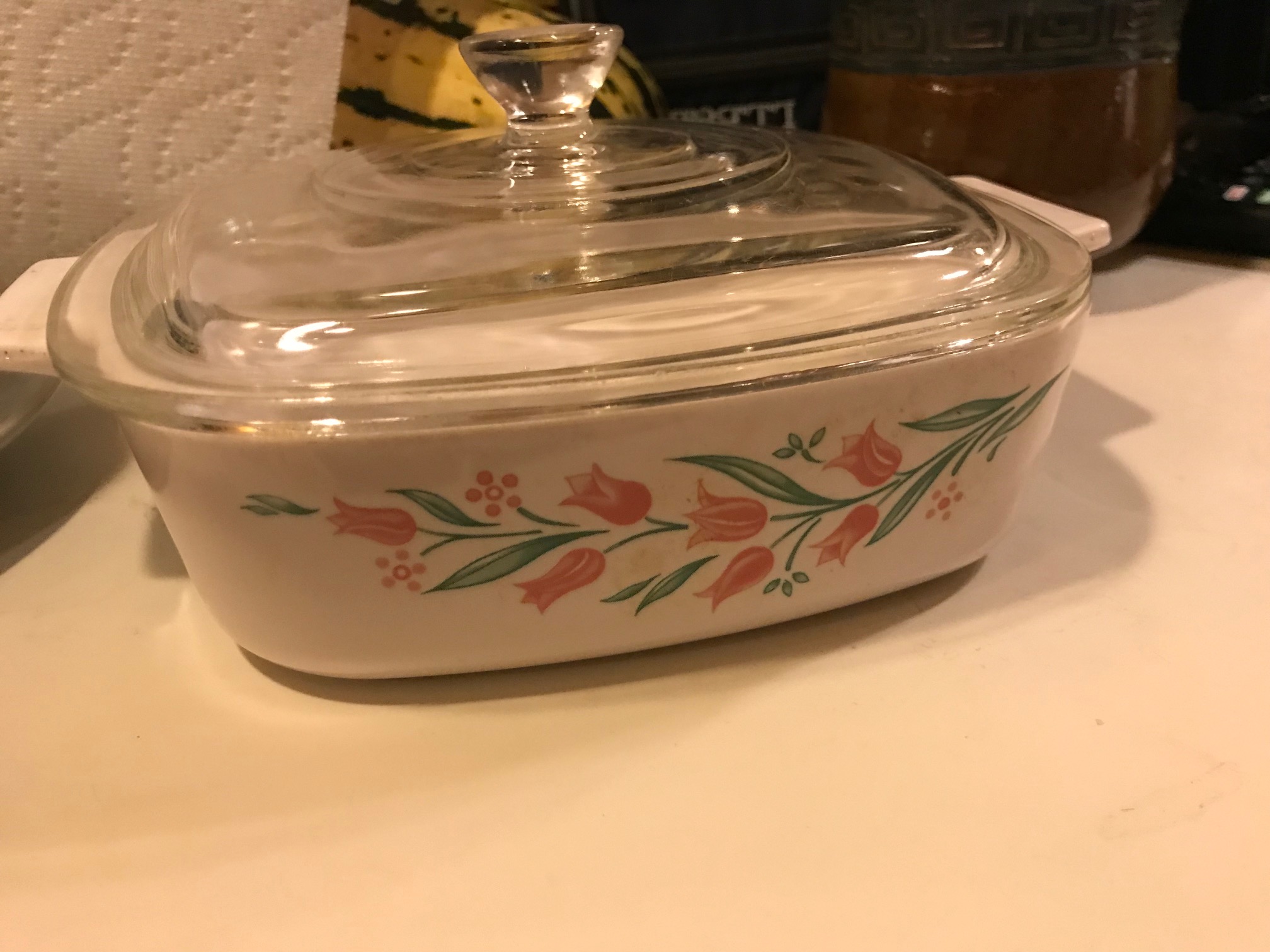
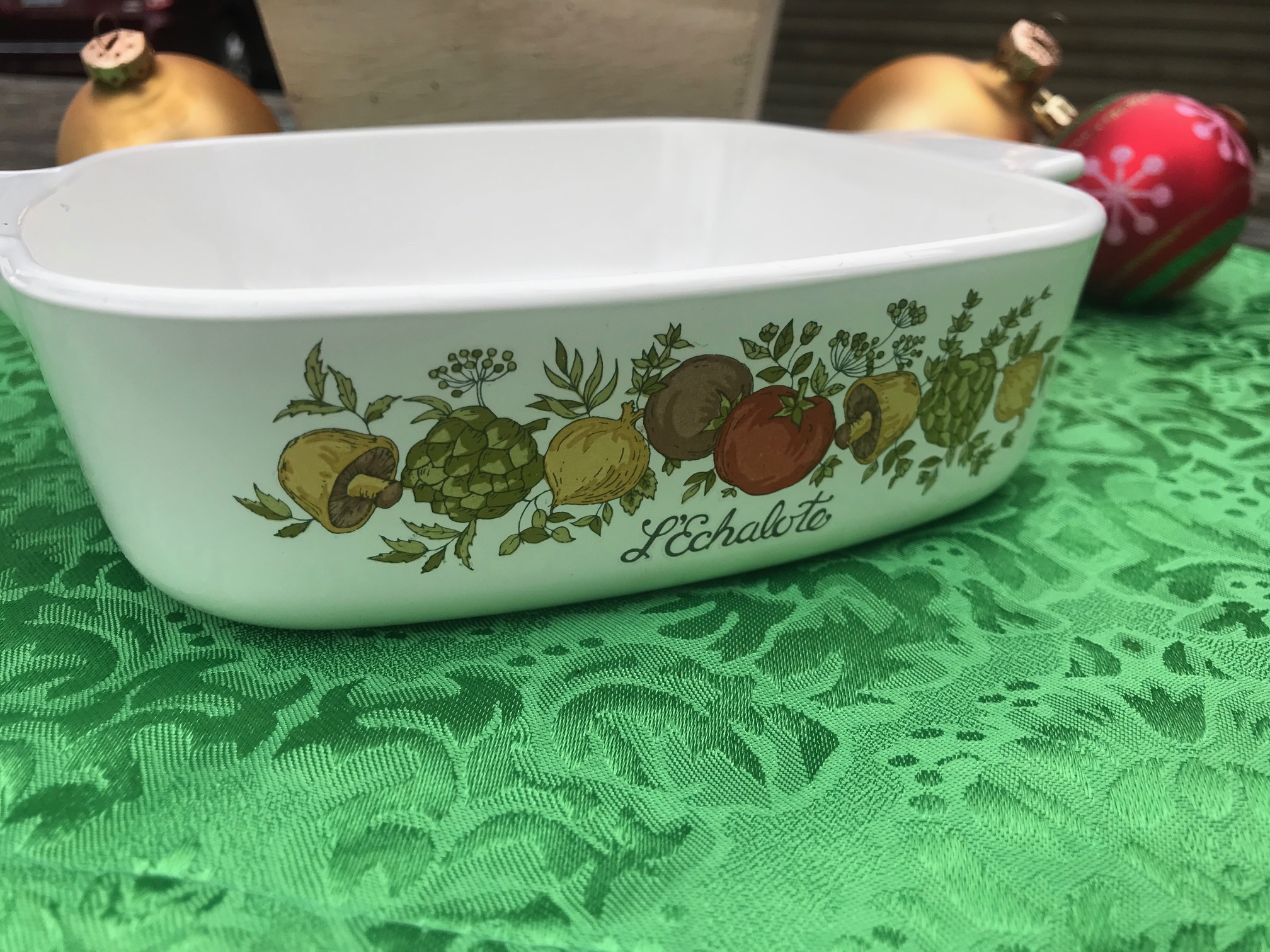

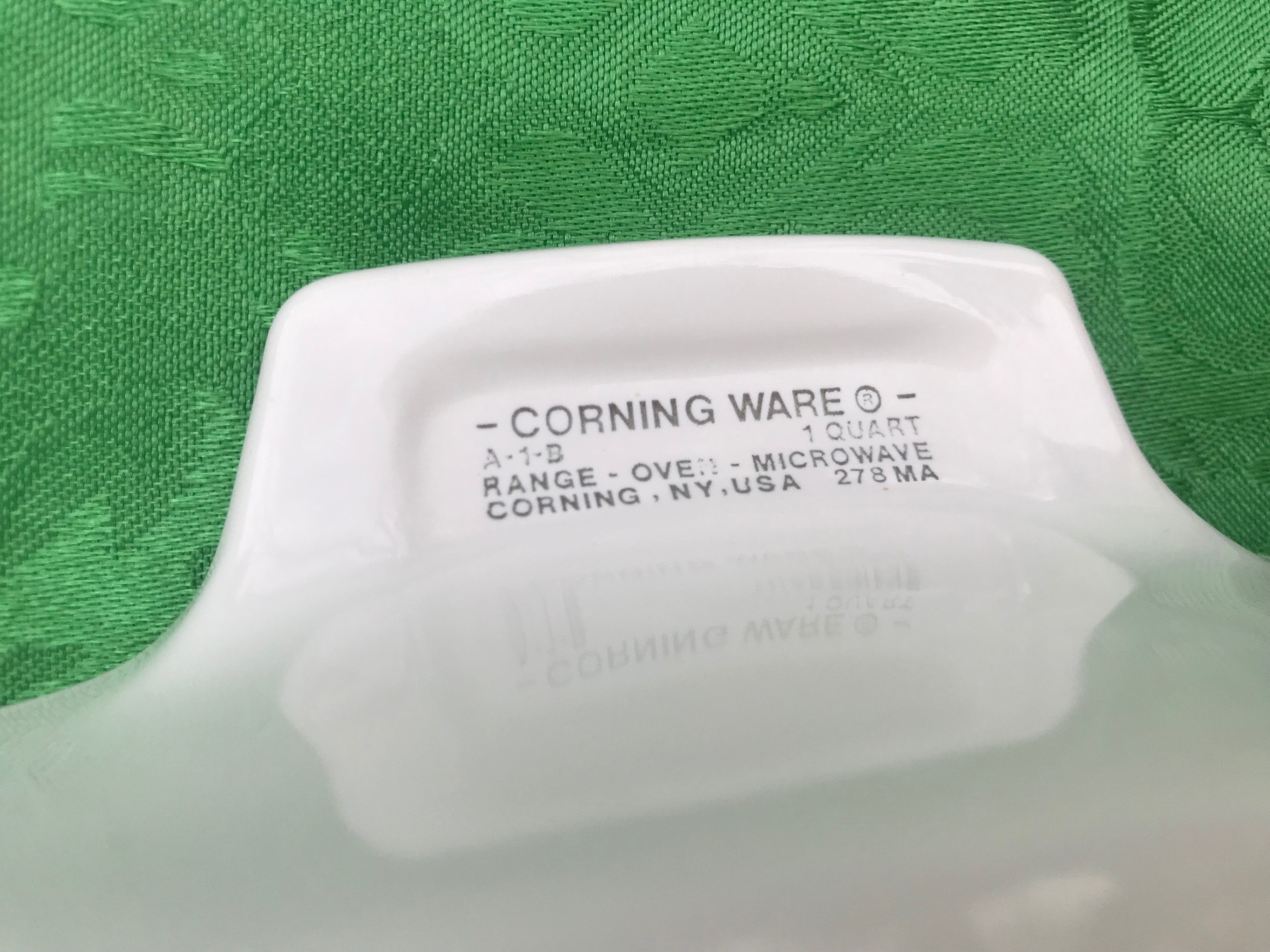

Apologies for an uninformed question. I am all set to chuck my corningware above. But does the lead, or cadmium in the patter on the outside of the dish leach into the food in the inside of the dish?
Thank you
Hi Sabrina! Since you are new to my page, I have updated the post with more information and an introduction to my work. I have more than 1,400 posts here on this blog and many do not have introductions or additional information (because that would bog down the information a bit!) – but I had no idea the this post would go viral. Since it is going viral (At least viral for me!) and has had nearly 2,000 views since I first posted it last night (!) I updated the post so that folks new to my site would have more background for my work and for the concern of Lead in cookware – including answering your specific question. Please let me know if the update does not answer your question or if you have additional questions after reading it. Thank you for being here!
Very helpful…thank you
Oh good!
T
Soooo if I store them not touching the pattern on the out side they are safe to us? If I washed them before use the inside is safe. As long as the painted don’t touch the cooking. Trying to use safely, because I love them. Thank You
Hello!
I certainly appreciate all that you’re doing to make us aware of lead poisoning, but how are we not dead or all have lead poisoning now considering all the things most of us in our 50-80’s grew up with! I mean my family had that very casserole dish you showed you were testing! We ate something out of it nearly every night!
I’m really freaking out now!!!
Paint has had lead in it for thousands of years. As long as you aren’t turning the casserole dish on its side, putting a slab of meat on top of the painted flowers, cooking it in that position and then eating it every night – you’ll be fine.
Your statement is not correct.
Please read this for context:
https://tamararubin.com/2020/07/if-the-lead-is-only-on-the-outside-of-my-dish-measuring-cup-mixing-bowl-etc-why-does-it-matter-that-it-has-lead/
And This:
https://tamararubin.com/2015/02/fine/
And This:
https://tamararubin.com/2021/06/but-is-this-dish-or-toy-or-lamp-or-vitamin-or-piece-of-jewelry-or-tibetan-brass-singing-bowl-actually-going-to-poison-me-and-how-would-that-happen-exactly/
Can you tell me what year the lead was no longer used? Or is it still. I have a few of these in the younger category also.
Also, wondering what to replace my, similar, cooking bowls with. How can I know that what I purchase now won’t have lead etc or on them?
Thank you very much for the alert and for researching this.
So far I have tested designs dating to 1998 – all positive for Lead. I haven’t tested any newer ones yet that I can pinpoint a date-range for. Which patterns do you have? Do you know the year of manufacture? Here’s a link to all of the ones I have tested: https://tamararubin.com/category/corningware-casserole/
What are some alternative safe dishes to use? I have a cabinet full of Corningware thinking it was a safe choice when all the info on aluminium surfaced. What are good choices to cook with?
Here’s my post about Lead-free casserole dishes: https://tamararubin.com/2017/10/casseroles/
Wow, speedy reply. Thank you. I have one blue cornflour so it gets to stay. 🙂 One which you have pictured with veg on the side, so it’s leavng. Also one which is white inside and out and has Corning Ware F 14 B 4 litre, made in USA , 19 on the base.
Hi I found all this info to be quite useful. I am curious to know if you have tested any temptation pieces?
Can you share a link with me? With a photo?
Have you tested the Corning wear with the blue design on the outside?
Yes – the casseroles? Older ones can be leaded, new ones are lead-free. You can click the “Corningware” tab at the top of this post to see the other designs I have tested.
I was curious if you had tested any of the Churchill Briar Rose pattern.
I have several pieces of Corningware from the early 70’s in the sunflower pattern/colors.I looked through all that you have posted and didn’t see anything like mine. do you have any idea if that one has been tested? I bought most of mine around 1971. thanks bunches.
I have tested the sunflowers and they were also positive for lead. Pretty much all of the patterns through at least the year 2000 have been positive for high levels of Lead.
– Tamara
Thanks for letting me know. Darn! I love these and they were given to me by someone who is now deceased. I hate to give them up, but lead isn’t something I want around. Sigh. Thanks for all that you do.
So your telling me.. y grandmothers Franciscian Desert Rose…crafted in California USA are potentially dangerous to serve of eat from the items…,,,Pkwase tell me more…..Thank you….,
Hi Betty,
Yes – those particular dishes are very dangerous and will likely poison the user (and I did not often say that about products.)
Here is the category of Franciscan dishes on my blog: https://tamararubin.com/category/franciscan/
Here are the Franciscan Rose dishes:https://tamararubin.com/category/franciscan-desert-rose/ (there’s a video too)
Tamara
Great article Tamara. Are pyrex clear dishes safe?
Hi Sam!
Generally yes they are. New ones will be Lead-free, vintage clear Pyrex sometimes has very low level trace lead (usually under 300 ppm if at all.)
Tamara
Tamara,
On the inside surface you only give the following results:
Antimony (Sb): 77 +/- 18 ppm
Bromine (Br): 178 +/- 10 ppm
Zinc (Zn): 9,890 +/- 303 ppm
Iron (Fe): 667 +/- 138 ppm
Titanium (Ti): 19,700 +/- 800 ppm
I presume this means that your XRF did not detect any lead, cadmium or chromium on the inside surface that comes into contact with the food. Could you please confirm this?
As an environmental scientist I am quite interested in this topic and have a colleague who has worked on a similar issue, finding significant lead intake from acidic foods served from pottery with high-lead glazes (in Kazakstan, I believe). My main concern is with the surfaces that will come into contact with food. I think that any chips of the pattern paint which contain high concentrations of lead, cadmium, and chromium can be rinsed or wiped out immediately prior to use. This would allow safe use of the cookware as food will not contact the painted surfaces.
Thanks,
-Andy Horn
Andy, what is your friend of the scientist and yourself think about the metals found on the inside make up of the corning ware, the Bromine, Antimony, zinc, iron etc?
I’m curious about that too
Is there toxicity from the metals
Hi Tamara – I’m also interested in this same question. Sounds like lead was detected in the decorative image on the outside of the pan, but no lead was mentioned on the inside cooking surface of the pan. This leads me to believe that the pan is still safe to use. Can you confirm or clarify this? Thank you!
Wow, thank you so much for this. I have been using an older Crock Pot, and I’m wondering if it is toxic.
Unfortunately, this corningware is like mine which I’ve used for years. Since reading your posts and website, I’m slowly weeding through all my cookware, dishes, glasses etc, replacing them with your suggested lead free items. It’s difficult giving up some of these things, but it’s worth it! I have some dishes called lenox termperware, that I still have and use because they never break and they don’t get hot in the microwave. They are my absolute favorite dishes. Now, i’m wondering how safe they are. I got them in 1973 and they are called Fancy Free. There is raised painted decorations on them which from what you have stated, could be a warning sign. Have you done any testing on the temperware dishes? Thanks for educating us. Brenda
I have those same dishes and have used them for decades. Would also like to know.
You understand absolutely nothing about glass, and even less about Glass-Ceramics. What a charlatan. Just enough information to cause trouble.
Do the metals on the inside pose a toxicity problem
can I use all white corning ware casserole dishes. I don’t know how old my set is but the one I am holding has A-3-B 3 liter under the handle and nothing on the bottom. There is no color on it anywhere. Thanks.
Tamara,
What can you tell me about the vintage Fiesta colored mixing bowl sets? Someone gave me a vintage set I believe ate form the 1970’s. I can provide a photo but not sure how/where to send that.
Thanks!
Here’s details on sending me pictures
https://tamararubin.com/2019/08/tamara-can-i-send-you-one-of-my-dishes-to-test-for-lead/
re corning ware….. I presume you are testing USA corning ware. I have a patterned 1.5 L casserole dish P4
says on its base Cerammed in Australia for range, oven, microwave, freezer and dishwasher. The side picture is similar to yours but says Le Persil, Le Sauge.
Could be purchased 1970 -1980…
Dangerous?
Thank you, Rhon
Thank you for all this information and work. Do you have a recommended method of safe disposal?
I have been using the corning ware white with gold pattern and green pattern on the outside for decades. I have no idea if I have consumed lead. I saw that the cups I use have 31,ooo parts etc. Yikes! I drink coffee in these and heat in the microwave all day. I use the colored bowls every day too. I just don’t know about this lead poisoning idea coming from these dishes etc. I feel that they would have recalled all old dishes etc. if eating on them was a problem. How do you even know if you have poisoning going on? I mean this website is very disturbing. My tupperware? my pyrex glass pans? My pyrex bowls? I have everything pretty much vintage… I grew up with my grandmother and I love it all. Why are you being an alarmist?
Hi Janie! Read this post: https://tamararubin.com/2018/02/why/
and read this one too: https://tamararubin.com/2020/05/i-dont-do-what-i-do-to-spread-fear-i-do-what-i-do-to-educate-so-you-can-make-informed-choices-for-your-family/
Thanks!
Janie – you might also find this post helpful: https://tamararubin.com/2015/02/fine/
And this post:https://tamararubin.com/2017/01/what-is-the-impact-of-lead-poisoning-in-adults-including-college-age-students/
Tamara
I just received a Le Thé vintage CorningWare teapot. It does have the painted design on the exterior. I know it sounds from your post like it would not be wise to use the casserole dishes… What are your thoughts on a stove top teapot where the painted part would not be directly in the heat? It’s so adorable, but I would not want to harm myself for my family!
Are old pink depression Glass lead free? I also have a 1970s harvest gold glass bowl and some old white bubble glass. These were my mother’s and I’d like to use if safe.
Hi Terri,
I have not tested enough examples of pink depression glass to determine if it (as a class) can be considered Lead-free. Have you looked up each of these things on my blog yet? I do have examples of White glass (bubble glass) and other similar items to what you have described. Please watch the video about using the website as a good place to start (there are over 2,700 posts and pages with information here): https://tamararubin.com/2020/12/how-to-use-the-lead-safe-mama-website-video/
Tamara
I have the ALL white, no design, no color but just white CorningWare casseroles. They’re just like the Bluecornflower ones but NO design. They might be from the 80’s. Do they have lead?
Those are usually Lead-free! 🙂
Lucky you!
T
How should one go about safely disposing of all of our leaded items?
I have a post about that! (Thanks for asking):
https://tamararubin.com/2019/12/what-should-i-do-with-my-lead-contaminated-dishes-to-toss-or-not-to-toss/
Tamara
Hi again Tamara! I’m asking another question; In the Corningwear casserole dishes, where is the lead and cadmium? Is it in the bowl itself (the clay material), or in the outer glaze/varnish/coating, or just in the colored, painted designs? Thank you for your help!! And God Bless you!
Hi Tamara#This is very interesting.
I live in the UK but bought a lot of Corelle and Pyrex in the USA when I lived there in 1976 to 1979 I also have old clear Pyrex made in England. Also clear Pyrex bowls made in France and some white Pyrex decorated with blue which is from the 1960s my mother bought. Its all a nightmare and we have been basically cheated by these companies . Were they aware ? I also have bone china mugs probably made in China though of good quality . Its all very worrying. Perhaps its best to throw it all!
I have a Royal Doulton set of porcelain from 1995 also etc etc . Also Denby from 1990 . Perhaps everything is toxic ?
Thank you for warning us though !
I happened to stumble on your website by sheer luck. I feed my two little dogs breakfast, lunch, and dinner on the Autumn Leaf saucers made by Hall. Do these have high levels of lead or other bad things?
We use Currier and Ives dishes on a daily basis several times per day. I have 4 young children and am very worried and concerned after recently learning about lead content. Do you know if these have high lead content? We have the entire matching set of these dishes!
WoW…I have a ton of Corningware I use all the time.. Can you send me a list?
Sorry, but I can not see any problem with this Corningware. Iron, Titanium, so what? Bromine is prescribed for a night sleep. Zinc is in our supplements, necessary for our bodies to function properly. Eat raw food then, Much Ado About Nothing! A mechanical engineer by profession.
There’s no problem with the plain white Corningware in most cases.
I have several pieces of the Corningware baking dishes (Spice o’ Life & Cornflower) and Corelle Livingware (some with gold pattern and some with green), as well as some Pyrex measuring cups with red rubber lids and red enamel graduations on them. My wife has service for six in Princess House crystal, as well as a number of occasional pieces and a blown-glass pitcher in a matching pattern.
I am concerned that these vessels may be poisoning our family, as my wife has been diagnosed with multiple sclerosis and I have been diagnosed with essential tremor. Does eating or drinking from these vessels cause autoimmune diseases? Should we throw them out? My wife is quite attached to her cookware and tableware but I’ll get rid of it on the sly (when she’s not looking) if doing so will protect us from harm.
Hi Michael – yes – especially with the crystal there is a direct link to symptoms like yours. MS has been documented to have links to Lead exposure specifically. I will find you some links (one is below). Please do stop using ANY crystal and try to eliminate any other potentially toxic cookware or serving ware. So many people have illnesses like yours with “no source” of the illness – yet we all have items like this in our homes that are suspect – especially in light of the fact it has been well established that there is no safe level of lead exposure for humans.
This post has background on Crytal:
https://tamararubin.com/topics/crystal/
This post discusses the “only on the outside” consideration:
https://tamararubin.com/2020/07/if-the-lead-is-only-on-the-outside-of-my-dish-measuring-cup-mixing-bowl-etc-why-does-it-matter-that-it-has-lead/
This is one MS paper: https://jnnp.bmj.com/content/69/5/687
This states a link has not been proved yet – it is from 1976, I think there is some recent science establishing a link – I will keep looking for it: https://www.ncbi.nlm.nih.gov/pmc/articles/PMC2158341/
Here’s one from 2018: https://www.researchgate.net/publication/328286547_Blood_Lead_Levels_and_Multiple_Sclerosis_A_Case-Control_Study
” BLL was higher in MS patients, compared with healthy individuals. The risk of MS increased 1.17 times per one µg/L increment of blood lead level.”
Also here is my article listing symptoms in Adults – there is a bunch of science linked at the bottom:
https://tamararubin.com/2017/01/what-is-the-impact-of-lead-poisoning-in-adults-including-college-age-students/
Tamara
In 1971 food storage/ cooking items had to get an okay from the FDA. These items all passed inspection from what I’ve read. The Pyrex company has been making their items from 1919(?) forward in the same way. How do they show up with lead now? You are listing items made after 1971. How is this possible if they all had to meet the criteria for lead content (or lack thereof)?
Please read this for context – they were not required to test certain products and they were not required to test the outside of products:
https://tamararubin.com/topics/does-vintage-and-new-functional-pottery-and-dishware-have-unsafe-levels-of-lead/
Tamara
Which patterns and years of the cornwear are safe? When i go to estate sales, I find great sets all the time and would love to buy à set someday but only if I know what I’m looking for. What are some pointers ? I’m finding my pirex clear glass easily break and I’m tired of it. What’s another Tupperware that’s safe and won’t keep chipping ? Also vintage corning wear or newer that is safe? Thank YOU!
I have tons of the Corningware and use it all the time…..Which are the NO NOS?
I live in Australia so your reviews interest me…Janet
Awaiting your response
Have you tested any other patterns? I have several pieces of the original blue coneflower pattern that belonged to my grandmother.
I have the original plate sets of the cornflower and have used it for 50 years…. Should I toss due to Toxic chemicals? Thanks